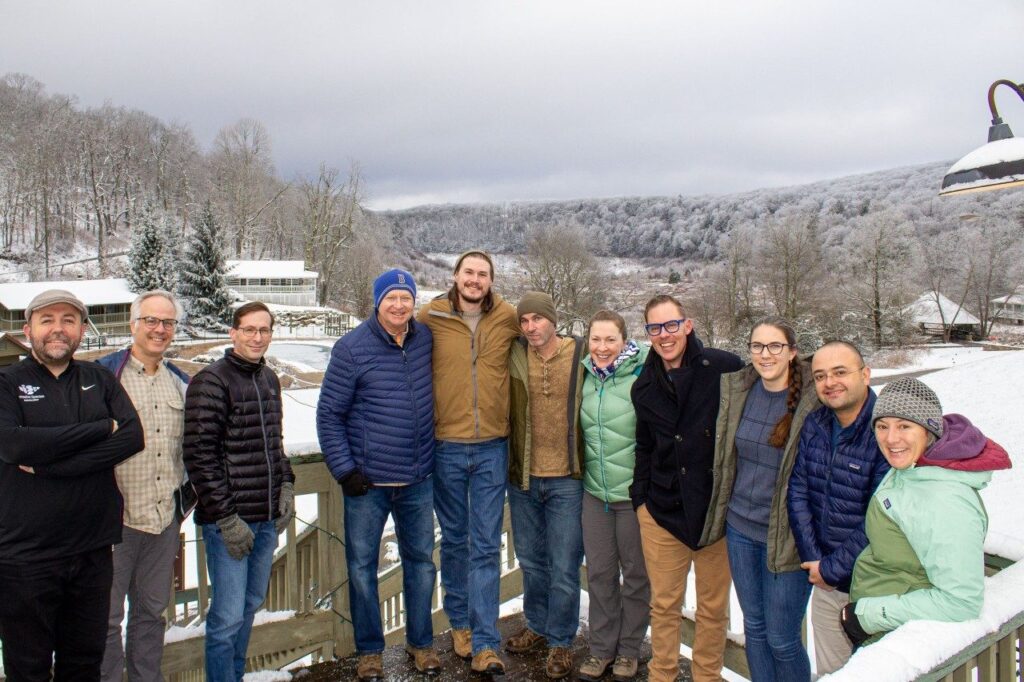Invasive alien species are all around us . . .
They come in the form of plants, animals, or microorganisms that are introduced, intentionally or unintentionally, into areas where they are not native and cause negative environmental, economic, or cultural harm. In fact, 60 percent of global extinctions have been caused, solely or alongside other drivers, by invasive alien species, according to the Assessment Report on Invasive Alien Species and Their Control.
Produced by the Intergovernmental Science-Policy Platform on Biodiversity and Ecosystem Services in 2023, the assessment is the first comprehensive global report on invasive alien species and their control. It includes the contributions of about 200 experts around the globe, including Jacob Barney, director of the Virginia Tech’s Invasive Species Working Group.
“I am very proud of being able to contribute to the global record,” said Barney, professor in the School of Plant and Environmental Sciences. “Getting accurate information on an issue of global significance takes global input so it’s not something any sole researcher or institution can do well [independently]. This report nicely demonstrates how colleagues from across the world can work on something together to help address a problem.”
In recognition of National Invasive Species Awareness Week, Feb. 26-March 3, invasive species experts will come together in Washington, D.C., and virtually across North America with government officials and agency leaders to discuss prevention and management priorities.
The Invasive Species Working Group will host a watch party for the Invasive Species Language Workshop, a two-hour live webinar Feb. 27 at 1:30 p.m. in 118 Steger Hall. Registration is required, and the event is currently only open to Virginia Tech faculty, staff, and students.
Invasive species researchers and science communication professionals will share best practices for communicating biological invasions to scientists, stakeholders, and the public.
In addition to informing U.S. policymakers, the assessment report serves as a resource to guide countries, communities, and international organizations and represents a pivotal step toward advancing the Kunming-Montreal Global Biodiversity Framework. The framework, adopted by the United Nations in December 2022, aims to halt and reverse biodiversity loss by 2030 while reducing the rate of introduction and establishment of invasive alien species by at least 50 percent.
Act locally, think globally
One of the primary functions of Barney’s work with the Invasive Species Working Group at Virginia Tech is to raise public awareness of invasive species, both globally and locally, through outreach and education workshops. Such activities include displaying hemlock trees that are infested with wooly adelgids or crayfish from local waters to demonstrate the diversity of invasive species in our local landscape.

These outreach efforts empower people to make informed decisions when they move firewood, clean boating gear, adopt exotic pets, hit hiking trails, and decide which plants to use in their yards. Landscaping plants can be particularly pernicious as “green isn’t always good.”
“In some cases, the plants that we are often the most familiar with can actually be problematic and have health effects,” said Barney.
The Japanese barberry is one of the most dramatic ornamental culprits. As it escapes into the forests, it changes the habitat such that tick populations increase, which can lead to a rise in Lyme disease cases.
Other known invasive alien species include bamboo, Chinese silvergrass, and English ivy, which can have a devastating effect on trees with heavy vines that can force branches down and kill the tree entirely.
On a mitigating mission
The Invasive Species Working Group draws on Virginia Tech’s presence in the greater Washington, D.C., metro area, partnerships with Virginia Cooperative Extension, and the interdisciplinary networks of the Global Change Center and Fralin Life Sciences Institute to produce original research, connect across branches of knowledge, and train the next generation of policy-minded scientists.
Through the lens of transdisciplinary science, the group champions the idea of bringing together biologists and resource managers, social scientists, policy experts, and other stakeholders to facilitate new partnerships across Virginia, the United States, and the world.
The group will host its first invasive species symposium for Virginia Tech faculty, staff, and students on March 15 to highlight the multidisciplinary invasive species research underway across campus and give opportunities to network with colleagues. Various other engagement opportunities will be offered throughout the semester, which include structured socials, a proposal slam, a film screening at The Lyric, and a team for The Big Event.

In 2023, the Invasive Species Working Group was awarded one of the two Destination Area 2.0 projects from the Office of the Executive Vice President and Provost to help position Virginia Tech to become a center of excellence in the science, policy, and management of invasive species. Through this universitywide interdisciplinary investment, Virginia Tech is conducting a cluster hire for seven faculty positions in the following academic areas:
- Applied economist through the College of Science, College of Agriculture and Life Sciences, and the Kellogg Center
- Environmental law and policy through the College of Liberal Arts and Human Sciences
- Environmental data scientist through the College of Science
- Invasive species research and Extension through the College of Agriculture and Life Sciences
- Management technologist through the College of Natural Resources and the Environment
- Global change interactions biologist through the College of Natural Resources and the Environment
- Invasive plant genomics through the College of Agriculture and Life Sciences
By Jenise L. Jacques

